一文读懂Android View事件分发机制
Posted Flyzend
tags:
篇首语:本文由小常识网(cha138.com)小编为大家整理,主要介绍了一文读懂Android View事件分发机制相关的知识,希望对你有一定的参考价值。
android View 虽然不是四大组件,但其并不比四大组件的地位低。而View的核心知识点事件分发机制则是不少刚入门同学的拦路虎。ScrollView嵌套RecyclerView(或者ListView)的滑动冲突这种老大难的问题的理论基础就是事件分发机制。
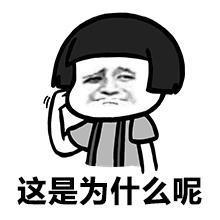
事件分发机制面试也会经常被提及,如果你能get到要领,并跟面试官深入的灵魂交流一下,那么一定会让面试官对你印象深刻,抛出爱的橄榄枝~想想都有点小激动呢~。那么就让我们从浅入深,由表及里的去看事件分发机制,全方位,立体式,去弄懂这个神秘的事件分发机制吧。
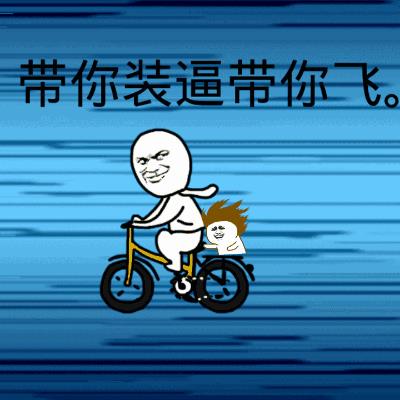
MotionEvent事件初探
我们对屏幕的点击,滑动,抬起等一系的动作都是由一个一个MotionEvent对象组成的。根据不同动作,主要有以下三种事件类型:
1.ACTION_DOWN:手指刚接触屏幕,按下去的那一瞬间产生该事件
2.ACTION_MOVE:手指在屏幕上移动时候产生该事件
3.ACTION_UP:手指从屏幕上松开的瞬间产生该事件
从ACTION_DOWN开始到ACTION_UP结束我们称为一个事件序列
正常情况下,无论你手指在屏幕上有多么骚的操作,最终呈现在MotionEvent上来讲无外乎下面两种。
1.点击后抬起,也就是单击操作:ACTION_DOWN -> ACTION_UP
2.点击后再风骚的滑动一段距离,再抬起:ACTION_DOWN -> ACTION_MOVE -> ... -> ACTION_MOVE -> ACTION_UP

public class MotionEventActivity extends BaseActivity
private Button mButton;
@Override
protected void onCreate(Bundle savedInstanceState)
super.onCreate(savedInstanceState);
setContentView(R.layout.activity_motion_event);
mButton = (Button) findViewById(R.id.button);
mButton.setOnTouchListener(new View.OnTouchListener()
@Override
public boolean onTouch(View v, MotionEvent event)
switch (event.getAction())
case MotionEvent.ACTION_DOWN:
e("MotionEvent: ACTION_DOWN");
break;
case MotionEvent.ACTION_MOVE:
e("MotionEvent: ACTION_MOVE");
break;
case MotionEvent.ACTION_UP:
e("MotionEvent: ACTION_UP");
break;
return false;
);
public void click(View v)
e("点击了按钮");
注:e("xxx")是BaseActivity封装的Log显示方法,具体请看BaseProject
当我们单击按钮:

当我们在按钮上风骚走位(滑动):

细心的同学一定发现了我们常用的按钮的onclick事件都是在ACTION_UP以后才被调用的。这和View的事件分发机制是不是有某种不可告人的关系呢?!
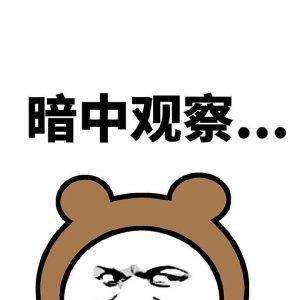
上面代码我们给button设置了OnTouchListener并重写了onTouch方法,方法返回值默认为false。如果这里我们返回true,那么你会发现onclick方法不执行了!!!What?
这些随着我们的深入探讨,结论就会浮出水面!针对MotionEvent,我们先说这么多。
MotionEvent事件分发
当一个MotionEvent产生了以后,就是你的手指在屏幕上做一系列动作的时候,系统需要把这一系列的MotionEvent分发给一个具体的View。我们重点需要了解这个分发的过程,那么系统是如何去判断这个事件要给哪个View,也就是说是如何进行分发的呢?
事件分发需要View的三个重要方法来共同完成:
public boolean dispatchTouchEvent(MotionEvent event)
通过方法名我们不难猜测,它就是事件分发的重要方法。那么很明显,如果一个MotionEvent传递给了View,那么dispatchTouchEvent方法一定会被调用!
返回值:表示是否消费了当前事件。可能是View本身的onTouchEvent方法消费,也可能是子View的dispatchTouchEvent方法中消费。返回true表示事件被消费,本次的事件终止。返回false表示View以及子View均没有消费事件,将调用父View的onTouchEvent方法public boolean onInterceptTouchEvent(MotionEvent ev)
事件拦截,当一个ViewGroup在接到MotionEvent事件序列时候,首先会调用此方法判断是否需要拦截。特别注意,这是ViewGroup特有的方法,View并没有拦截方法
返回值:是否拦截事件传递,返回true表示拦截了事件,那么事件将不再向下分发而是调用View本身的onTouchEvent方法。返回false表示不做拦截,事件将向下分发到子View的dispatchTouchEvent方法。public boolean onTouchEvent(MotionEvent ev)
真正对MotionEvent进行处理或者说消费的方法。在dispatchTouchEvent进行调用。
返回值:返回true表示事件被消费,本次的事件终止。返回false表示事件没有被消费,将调用父View的onTouchEvent方法
上面的三个方法可以用以下的伪代码来表示其之间的关系。
public boolean dispatchTouchEvent(MotionEvent ev)
boolean consume = false;//事件是否被消费
if (onInterceptTouchEvent(ev))//调用onInterceptTouchEvent判断是否拦截事件
consume = onTouchEvent(ev);//如果拦截则调用自身的onTouchEvent方法
else
consume = child.dispatchTouchEvent(ev);//不拦截调用子View的dispatchTouchEvent方法
return consume;//返回值表示事件是否被消费,true事件终止,false调用父View的onTouchEvent方法
通过上面的介绍相信我们已经初步了解了View事件分发的机制
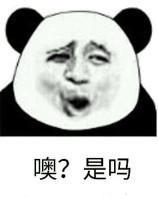
接下来我们来看一下View 和ViewGroup 在事件分发的时候有什么不一样的地方
ViewGroup是View的子类,也就是说ViewGroup本身就是一个View,但是它可以包含子View(当然子View也可能是一个ViewGroup),所以不难理解,上面所展示的伪代码表示的是ViewGroup 处理事件分发的流程。而View本身是不存在分发,所以也没有拦截方法(onInterceptTouchEvent),它只能在onTouchEvent方法中进行处理消费或者不消费。
上面结论先简单的理解一下,通过下面的流程图,会更加清晰的帮助我们梳理事件分发机制

View结构图
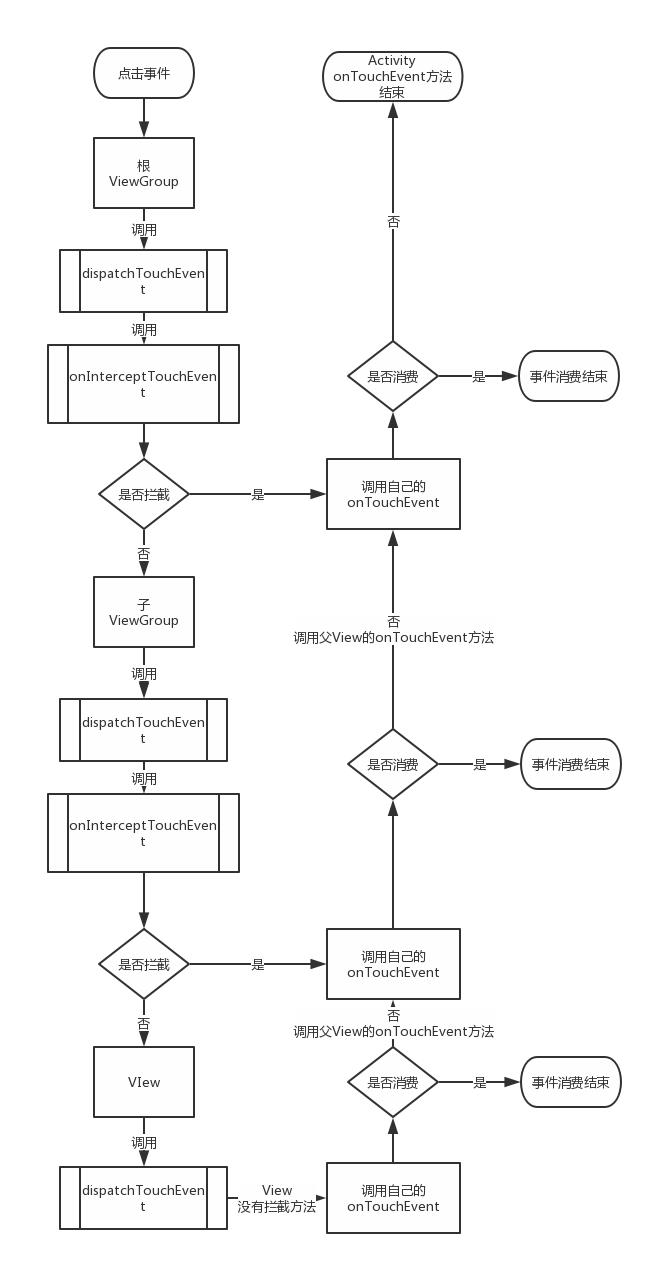
View事件分发流程图
可以看出事件的传递过程都是从父View到子View。
但是这里有三点需要特别强调一下
子View可以通过requestDisallowInterceptTouchEvent方法干预父View的事件分发过程(ACTION_DOWN事件除外),而这就是我们处理滑动冲突常用的关键方法。关于处理滑动冲突,我们下一篇文章会专门去分析,这里就不做过多解释。
对于View(注意!ViewGroup也是View)而言,如果设置了onTouchListener,那么OnTouchListener方法中的onTouch方法会被回调。onTouch方法返回true,则onTouchEvent方法不会被调用(onClick事件是在onTouchEvent中调用)所以三者优先级是onTouch->onTouchEvent->onClick
View 的onTouchEvent 方法默认都会消费掉事件(返回true),除非它是不可点击的(clickable和longClickable同时为false),View的longClickable默认为false,clickable需要区分情况,如Button的clickable默认为true,而TextView的clickable默认为false。
View事件分发源码
作为程序猿,最不想看的但是也不得不去看的就是源码!所谓知其然也要知其所以然,神秘的大佬曾经说过提高的方法就是READ THE FUCKING CODE!那么我们就带大家来看一下Android对事件分发的处理方式,看是否与我们上面说的结论一致!(为方便阅读,以下都只给出了关键代码并额外添加上一些简单注释,全部代码请自行阅读源码)
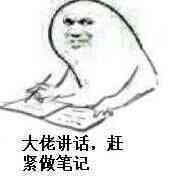
点击事件产生最先传递到当前的Activity,由Acivity的dispatchTouchEvent方法来对事件进行分发。那么很明显我们先看Activity的dispatchTouchEvent方法
Class Activity:
public boolean dispatchTouchEvent(MotionEvent ev)
if (ev.getAction() == MotionEvent.ACTION_DOWN)
onUserInteraction();
if (getWindow().superDispatchTouchEvent(ev)) //事件分发并返回结果
return true;//事件被消费
return onTouchEvent(ev);//没有View可以处理,调用Activity onTouchEvent方法
通过上面的代码我们可以发现,事件会给Activity附属的Window进行分发。如果返回true,那么事件被消费。如果返回false表示事件发下去却没有View可以进行处理,则最后return Activity自己的onTouchEvent方法。
跟进getWindow().superDispatchTouchEvent(ev)方法发现是Window类当中的一个抽象方法
Window类说明
/**
* Abstract base class for a top-level window look and behavior policy. An
* instance of this class should be used as the top-level view added to the
* window manager. It provides standard UI policies such as a background, title
* area, default key processing, etc.
*
* <p>The only existing implementation of this abstract class is
* android.view.PhoneWindow, which you should instantiate when needing a
* Window.
*/
Class Window:
//抽象方法,需要看PhoneWindow的实现
public abstract boolean superDispatchTouchEvent(MotionEvent event); Window的源码有说明The only existing implementation of this abstract class is
android.view.PhoneWindow,Window的唯一实现类是PhoneWindow。那么去看PhoneWindow对应的代码。

class PhoneWindow
// This is the top-level view of the window, containing the window decor.
private DecorView mDecor;
public boolean superDispatchTouchEvent(MotionEvent event)
return mDecor.superDispatchTouchEvent(event);
PhoneWindow又调用了DecorView的superDispatchTouchEvent方法。而这个DecorView就是Window的顶级View,我们通过setContentView设置的View是它的子View(Activity的setContentView,最终是调用PhoneWindow的setContentView,有兴趣同学可以去阅读,这块不是我们讨论重点)
到这里事件已经被传递到我们的顶级View中,一般是ViewGroup。
那么接下来重点将放到ViewGroup的dispatchTouchEvent方法中。我们之前说过,事件到达View会调用dispatchTouchEvent方法,如果View是ViewGroup那么会先判断是否拦截该事件。
class ViewGroup:
public boolean dispatchTouchEvent(MotionEvent ev)
...
final int action = ev.getAction();
final int actionMasked = action & MotionEvent.ACTION_MASK;
// Handle an initial down.
if (actionMasked == MotionEvent.ACTION_DOWN)
// Throw away all previous state when starting a new touch gesture.
// The framework may have dropped the up or cancel event for the previous gesture
// due to an app switch, ANR, or some other state change.
cancelAndClearTouchTargets(ev);
resetTouchState();//清除FLAG_DISALLOW_INTERCEPT设置,并且mFirstTouchTarget 设置为null
// Check for interception.
final boolean intercepted;//是否拦截事件
if (actionMasked == MotionEvent.ACTION_DOWN
|| mFirstTouchTarget != null)
//FLAG_DISALLOW_INTERCEPT是子类通过requestDisallowInterceptTouchEvent方法进行设置的
final boolean disallowIntercept = (mGroupFlags & FLAG_DISALLOW_INTERCEPT) != 0;
if (!disallowIntercept)
//调用onInterceptTouchEvent方法判断是否需要拦截
intercepted = onInterceptTouchEvent(ev);
ev.setAction(action); // restore action in case it was changed
else
intercepted = false;
else
// There are no touch targets and this action is not an initial down
// so this view group continues to intercept touches.
intercepted = true;
...
我们前面说过子View可以通过requestDisallowInterceptTouchEvent方法干预父View的事件分发过程(ACTION_DOWN事件除外)
为什么ACTION_DOWN除外?通过上述代码我们不难发现。如果事件是ACTION_DOWN,那么ViewGroup会重置FLAG_DISALLOW_INTERCEPT标志位并且将mFirstTouchTarget 设置为null。对于mFirstTouchTarget 我们可以先这么理解,如果事件由子View去处理时mFirstTouchTarget 会被赋值并指向子View。
所以当事件为ACTION_DOWN 或者 mFirstTouchTarget !=null(即事件由子View处理)时会进行拦截判断。具体规则是如果子View设置了FLAG_DISALLOW_INTERCEPT标志位,那么intercepted =false。否则调用onInterceptTouchEvent方法。
如果事件不为ACTION_DOWN 且事件为ViewGroup本身处理(即mFirstTouchTarget ==null)那么intercepted =false,很显然事件已经交给自己处理根本没必要再调用onInterceptTouchEvent去判断是否拦截。
结论:
当ViewGroup决定拦截事件后,后续事件将默认交给它处理并且不会再调用onInterceptTouchEvent方法来判断是否拦截。子View可以通过设置FLAG_DISALLOW_INTERCEPT标志位来不让ViewGroup拦截除ACTION_DOWN以外的事件。
所以我们知道了onInterceptTouchEvent并非每次都会被调用。如果要处理所有的点击事件那么需要选择dispatchTouchEvent方法
而FLAG_DISALLOW_INTERCEPT标志位可以帮助我们去有效的处理滑动冲突
当ViewGroup不拦截事件,那么事件将下发给子View进行处理。
class ViewGroup:
public boolean dispatchTouchEvent(MotionEvent ev)
final View[] children = mChildren;
//对子View进行遍历
for (int i = childrenCount - 1; i >= 0; i--)
final int childIndex = getAndVerifyPreorderedIndex(
childrenCount, i, customOrder);
final View child = getAndVerifyPreorderedView(
preorderedList, children, childIndex);
// If there is a view that has accessibility focus we want it
// to get the event first and if not handled we will perform a
// normal dispatch. We may do a double iteration but this is
// safer given the timeframe.
if (childWithAccessibilityFocus != null)
if (childWithAccessibilityFocus != child)
continue;
childWithAccessibilityFocus = null;
i = childrenCount - 1;
//判断1,View可见并且没有播放动画。2,点击事件的坐标落在View的范围内
//如果上述两个条件有一项不满足则continue继续循环下一个View
if (!canViewReceivePointerEvents(child)
|| !isTransformedTouchPointInView(x, y, child, null))
ev.setTargetAccessibilityFocus(false);
continue;
newTouchTarget = getTouchTarget(child);
//如果有子View处理即newTouchTarget 不为null则跳出循环。
if (newTouchTarget != null)
// Child is already receiving touch within its bounds.
// Give it the new pointer in addition to the ones it is handling.
newTouchTarget.pointerIdBits |= idBitsToAssign;
break;
resetCancelNextUpFlag(child);
//dispatchTransformedTouchEvent第三个参数child这里不为null
//实际调用的是child的dispatchTouchEvent方法
if (dispatchTransformedTouchEvent(ev, false, child, idBitsToAssign))
// Child wants to receive touch within its bounds.
mLastTouchDownTime = ev.getDownTime();
if (preorderedList != null)
// childIndex points into presorted list, find original index
for (int j = 0; j < childrenCount; j++)
if (children[childIndex] == mChildren[j])
mLastTouchDownIndex = j;
break;
else
mLastTouchDownIndex = childIndex;
mLastTouchDownX = ev.getX();
mLastTouchDownY = ev.getY();
//当child处理了点击事件,那么会设置mFirstTouchTarget 在addTouchTarget被赋值
newTouchTarget = addTouchTarget(child, idBitsToAssign);
alreadyDispatchedToNewTouchTarget = true;
//子View处理了事件,然后就跳出了for循环
break;
上面代码是将事件分发给子View的关键代码,需要关注的地方都加了注释。分发过程首先需要遍历ViewGroup的所有子View,可以接收点击事件的View需要满足下面条件。
1.如果View可见并且没有播放动画canViewReceivePointerEvents方法判断
/**
* Returns true if a child view can receive pointer events.
* @hide
*/
private static boolean canViewReceivePointerEvents(@NonNull View child)
return (child.mViewFlags & VISIBILITY_MASK) == VISIBLE
|| child.getAnimation() != null;
2.点击事件的坐标落在View的范围内isTransformedTouchPointInView方法判断
/**
* Returns true if a child view contains the specified point when transformed
* into its coordinate space.
* Child must not be null.
* @hide
*/
protected boolean isTransformedTouchPointInView(float x, float y, View child,
PointF outLocalPoint)
final float[] point = getTempPoint();
point[0] = x;
point[1] = y;
transformPointToViewLocal(point, child);
//调用View的pointInView方法进行判断坐标点是否在View内
final boolean isInView = child.pointInView(point[0], point[1]);
if (isInView && outLocalPoint != null)
outLocalPoint.set(point[0], point[1]);
return isInView;
如果满足上面两个条件,接着我们看后面的代码newTouchTarget = getTouchTarget(child);
/**
* Gets the touch target for specified child view.
* Returns null if not found.
*/
private TouchTarget getTouchTarget(@NonNull View child)
for (TouchTarget target = mFirstTouchTarget; target != null; target = target.next)
if (target.child == child)
return target;
return null;
可以看到当mFirstTouchTarget不为null的时候并且target.child就为我们当前遍历的child的时候,那么返回的newTouchTarget 就不为null,则跳出循环。我们前面说过,当子View处理了点击事件那么mFirstTouchTarget就不为nulll。事实上此时我们还没有将事件分发给子View,所以正常情况下我们的newTouchTarget 此时为null
接下来关键来了
dispatchTransformedTouchEvent(ev, false, child, idBitsToAssign)方法。为方便我们将代码再一次贴到后面来
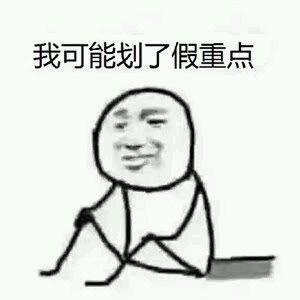
if (dispatchTransformedTouchEvent(ev, false, child, idBitsToAssign))
// Child wants to receive touch within its bounds.
mLastTouchDownTime = ev.getDownTime();
if (preorderedList != null)
// childIndex points into presorted list, find original index
for (int j = 0; j < childrenCount; j++)
if (children[childIndex] == mChildren[j])
mLastTouchDownIndex = j;
break;
else
mLastTouchDownIndex = childIndex;
mLastTouchDownX = ev.getX();
mLastTouchDownY = ev.getY();
//当child处理了点击事件,那么会设置mFirstTouchTarget 在addTouchTarget被赋值
newTouchTarget = addTouchTarget(child, idBitsToAssign);
alreadyDispatchedToNewTouchTarget = true;
//子View处理了事件,然后就跳出了for循环
break;
可以看到它被最后一个if包围,如果它返回为true,那么就break跳出循环,如果返回为false则继续遍历下一个子View。
我们跟进dispatchTransformedTouchEvent方法可以看到这样的关键逻辑
if (child == null)
handled = super.dispatchTouchEvent(event);
else
handled = child.dispatchTouchEvent(event);
这里child是我们遍历传入的子View此时不为null,则调用了child.dispatchTouchEvent(event);
我们子View的dispatchTouchEvent方法返回true,表示子View处理了事件,那么我们一直提到的,mFirstTouchTarget 会被赋值,是在哪里完成的呢?
再回头看dispatchTransformedTouchEvent则为true进入最后一个if语句,有这么一句newTouchTarget = addTouchTarget(child, idBitsToAssign);
/**
* Adds a touch target for specified child to the beginning of the list.
* Assumes the target child is not already present.
*/
private TouchTarget addTouchTarget(@NonNull View child, int pointerIdBits)
final TouchTarget target = TouchTarget.obtain(child, pointerIdBits);
target.next = mFirstTouchTarget;
mFirstTouchTarget = target;
return target;
没错,mFirstTouchTarget 就是在addTouchTarget中被赋值!到此子View遍历结束
如果在遍历完子View以后ViewGroup仍然没有找到事件处理者即ViewGroup并没有子View或者子View处理了事件,但是子View的dispatchTouchEvent返回了false(一般是子View的onTouchEvent方法返回false)那么ViewGroup会去处理这个事件。
从代码上看就是我们遍历的dispatchTransformedTouchEvent方法返回了false。那么mFirstTouchTarget 必然为null;
在ViewGroup的dispatchTouchEvent遍历完子View后有下面的处理。
// Dispatch to touch targets.
if (mFirstTouchTarget == null)
// No touch targets so treat this as an ordinary view.
handled = dispatchTransformedTouchEvent(ev, canceled, null,
TouchTarget.ALL_POINTER_IDS);
上面的dispatchTransformedTouchEvent方法第三个child参数传null
我们刚看了这个方法。当child为null时,handled = super.dispatchTouchEvent(event);所以此时将调用View的dispatchTouchEvent方法,点击事件给了View。到此事件分发过程全部结束!
结论:
ViewGroup会遍历所有子View去寻找能够处理点击事件的子View(可见,没有播放动画,点击事件坐标落在子View内部)最终调用子View的dispatchTouchEvent方法处理事件
当子View处理了事件则mFirstTouchTarget 被赋值,并终止子View的遍历。
如果ViewGroup并没有子View或者子View处理了事件,但是子View的dispatchTouchEvent返回了false(一般是子View的onTouchEvent方法返回false)那么ViewGroup会去处理这个事件(本质调用View的dispatchTouchEvent去处理)
通过ViewGroup对事件的分发,我们知道事件最终是调用View的dispatchTouchEvent来处理
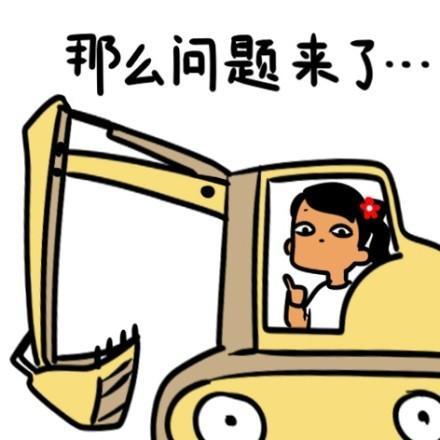
View最终是怎么去处理事件的
class View:
public boolean dispatchTouchEvent(MotionEvent ev)
// If the event should be handled by accessibility focus first.
if (event.isTargetAccessibilityFocus())
// We don't have focus or no virtual descendant has it, do not handle the event.
if (!isAccessibilityFocusedViewOrHost())
return false;
// We have focus and got the event, then use normal event dispatch.
event.setTargetAccessibilityFocus(false);
boolean result = false;
if (mInputEventConsistencyVerifier != null)
mInputEventConsistencyVerifier.onTouchEvent(event, 0);
final int actionMasked = event.getActionMasked();
if (actionMasked == MotionEvent.ACTION_DOWN)
// Defensive cleanup for new gesture
stopNestedScroll();
if (onFilterTouchEventForSecurity(event))
if ((mViewFlags & ENABLED_MASK) == ENABLED && handleScrollBarDragging(event))
result = true;
//noinspection SimplifiableIfStatement
ListenerInfo li = mListenerInfo;
if (li != null && li.mOnTouchListener != null
&& (mViewFlags & ENABLED_MASK) == ENABLED
&& li.mOnTouchListener.onTouch(this, event))
result = true;
if (!result && onTouchEvent(event))
result = true;
if (!result && mInputEventConsistencyVerifier != null)
mInputEventConsistencyVerifier.onUnhandledEvent(event, 0);
// Clean up after nested scrolls if this is the end of a gesture;
// also cancel it if we tried an ACTION_DOWN but we didn't want the rest
// of the gesture.
if (actionMasked == MotionEvent.ACTION_UP ||
actionMasked == MotionEvent.ACTION_CANCEL ||
(actionMasked == MotionEvent.ACTION_DOWN && !result))
stopNestedScroll();
return result;
上面是View的dispatchTouchEvent方法的全部代码。相比ViewGroup我们需要好几段去拆开看的长篇大论而言,它就简洁多了。很明显View是单独的一个元素,它没有子View,所以也没有分发的代码。我们需要关注的也只是上面当中的一部分代码。
//如果窗口没有被遮盖
if (onFilterTouchEventForSecurity(event))
if ((mViewFlags & ENABLED_MASK) == ENABLED && handleScrollBarDragging(event))
result = true;
//noinspection SimplifiableIfStatement
//当前监听事件
ListenerInfo li = mListenerInfo;
//需要特别注意这个判断当中的li.mOnTouchListener.onTouch(this, event)条件
if (li != null && li.mOnTouchListener != null
&& (mViewFlags & ENABLED_MASK) == ENABLED
&& li.mOnTouchListener.onTouch(this, event))
result =